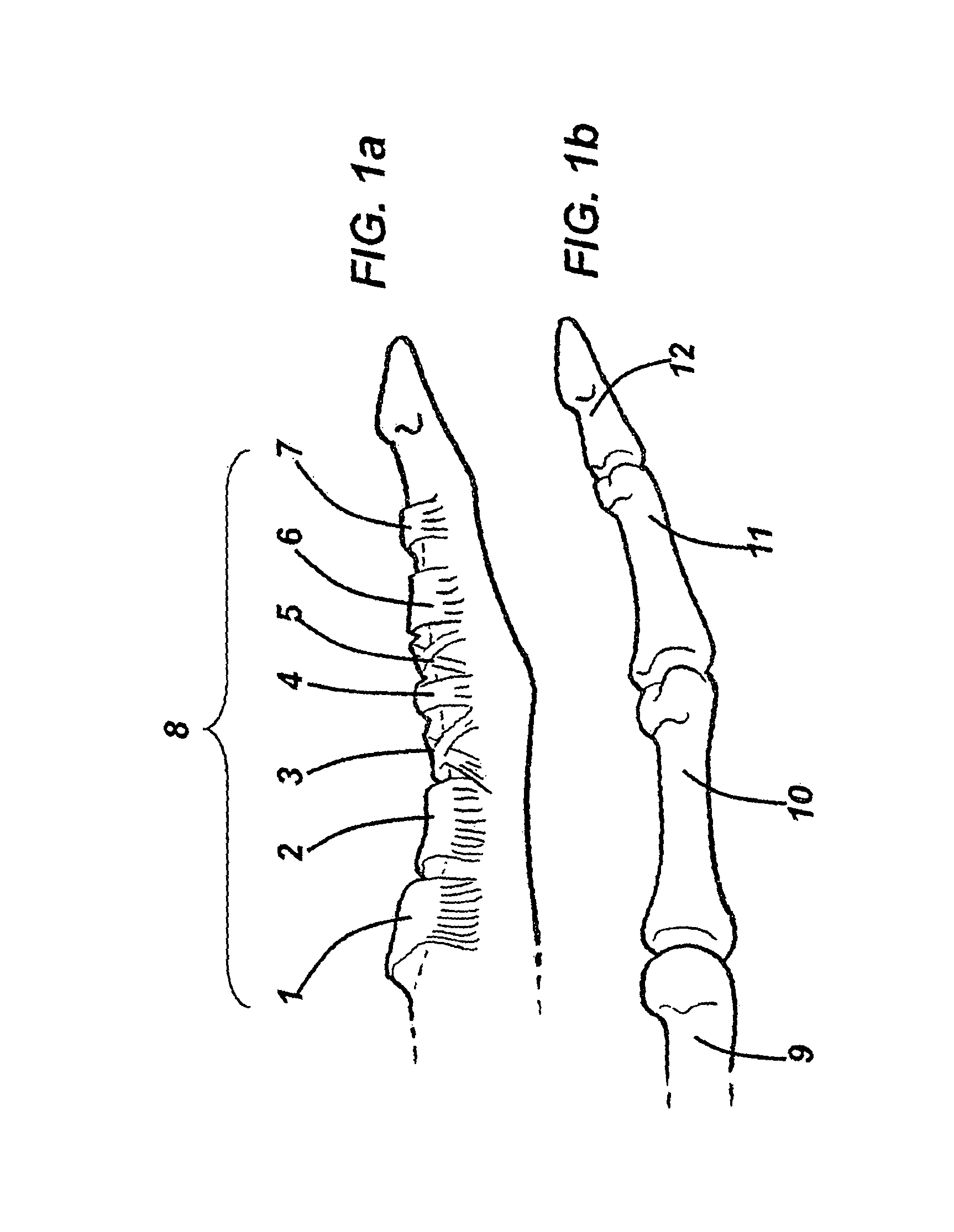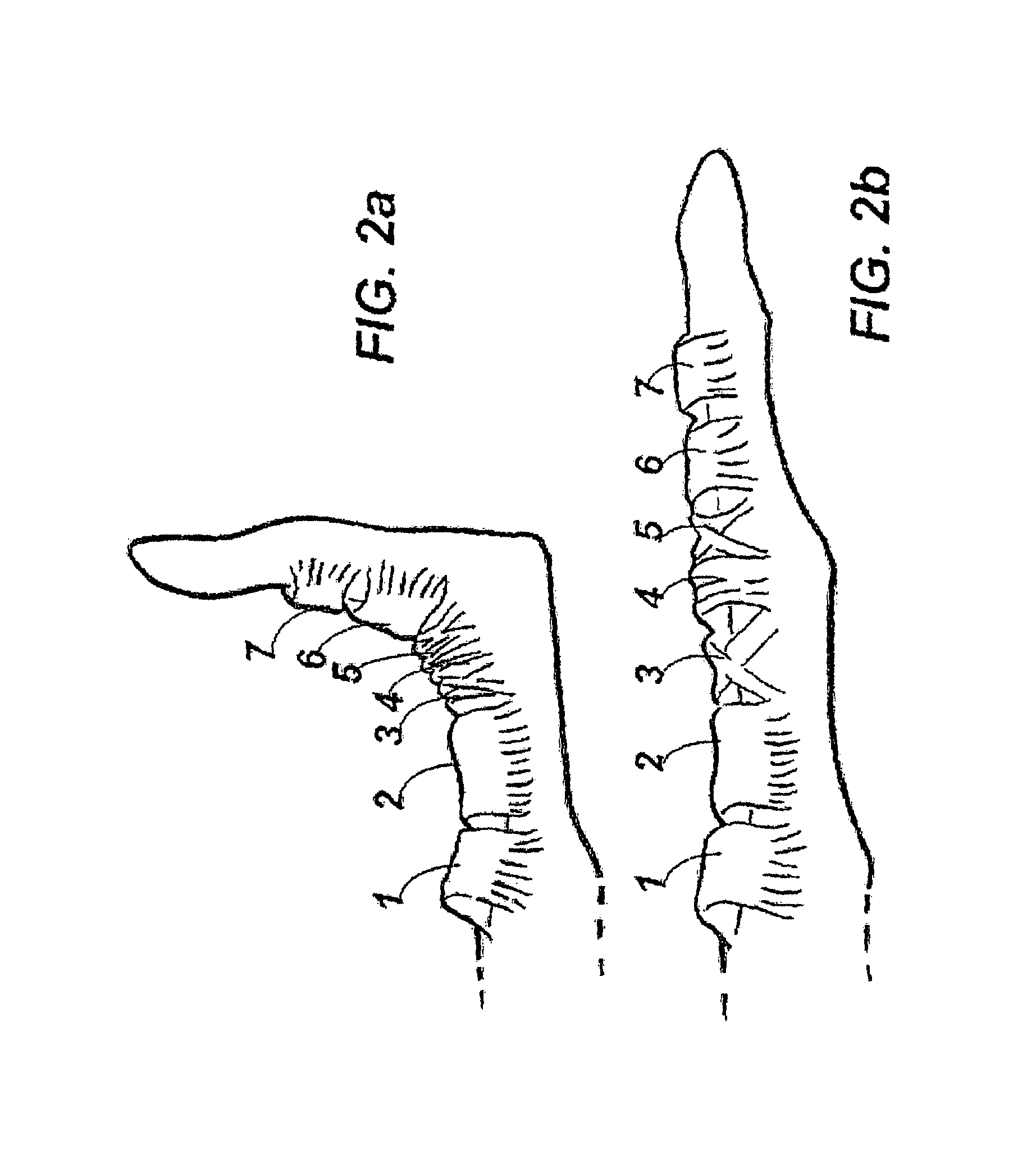Device and method for assisting in flexor tendon repair and rehabilitation
a technology for flexor tendon and flexor tendon, which is applied in the field of assisting in flexor tendon repair and rehabilitation, can solve the problems of unpredictable outcome and difficult tendon repair surgery at this site, and achieve the effects of minimizing the possibility of tendon rupture, smooth glide into and out, and minimizing the damage to the repair si
- Summary
- Abstract
- Description
- Claims
- Application Information
AI Technical Summary
Benefits of technology
Problems solved by technology
Method used
Image
Examples
Embodiment Construction
[0039]FIG. 1a illustrates the specific segments of a flexor tendon sheath 8 that are critical for the proper function and effectuation of finger flexion. FIG. 1b further illustrates a finger, its skeleton, and the different finger joints associated with the flexor tendon sheath 8. Pursuant to proper anatomic nomenclature, wherein structures closer to the head are referred to as “proximal” and structures further from the head are referred to as “distal,”FIG. 1b depicts the metacarpal 9, the proximal phalanx 10, the middle phalanx 11, and the distal phalanx 12.
[0040]As depicted in FIG. 1a, the flexor tendon sheath 8 is a continuous pulley system starting with the most proximal pulley 1 and finishing with the most distal pulley 7. The system of pulleys that comprises the flexor tendon sheath 8 has identifiable reinforced segments which form and correspond to each individual pulley, 1,2,3,4,5,6 and 7.
[0041]As illustrated in FIGS. 2a and 2b, the criss-cross arrangement of fibres in pulle...
PUM
 Login to View More
Login to View More Abstract
Description
Claims
Application Information
 Login to View More
Login to View More - R&D
- Intellectual Property
- Life Sciences
- Materials
- Tech Scout
- Unparalleled Data Quality
- Higher Quality Content
- 60% Fewer Hallucinations
Browse by: Latest US Patents, China's latest patents, Technical Efficacy Thesaurus, Application Domain, Technology Topic, Popular Technical Reports.
© 2025 PatSnap. All rights reserved.Legal|Privacy policy|Modern Slavery Act Transparency Statement|Sitemap|About US| Contact US: help@patsnap.com



